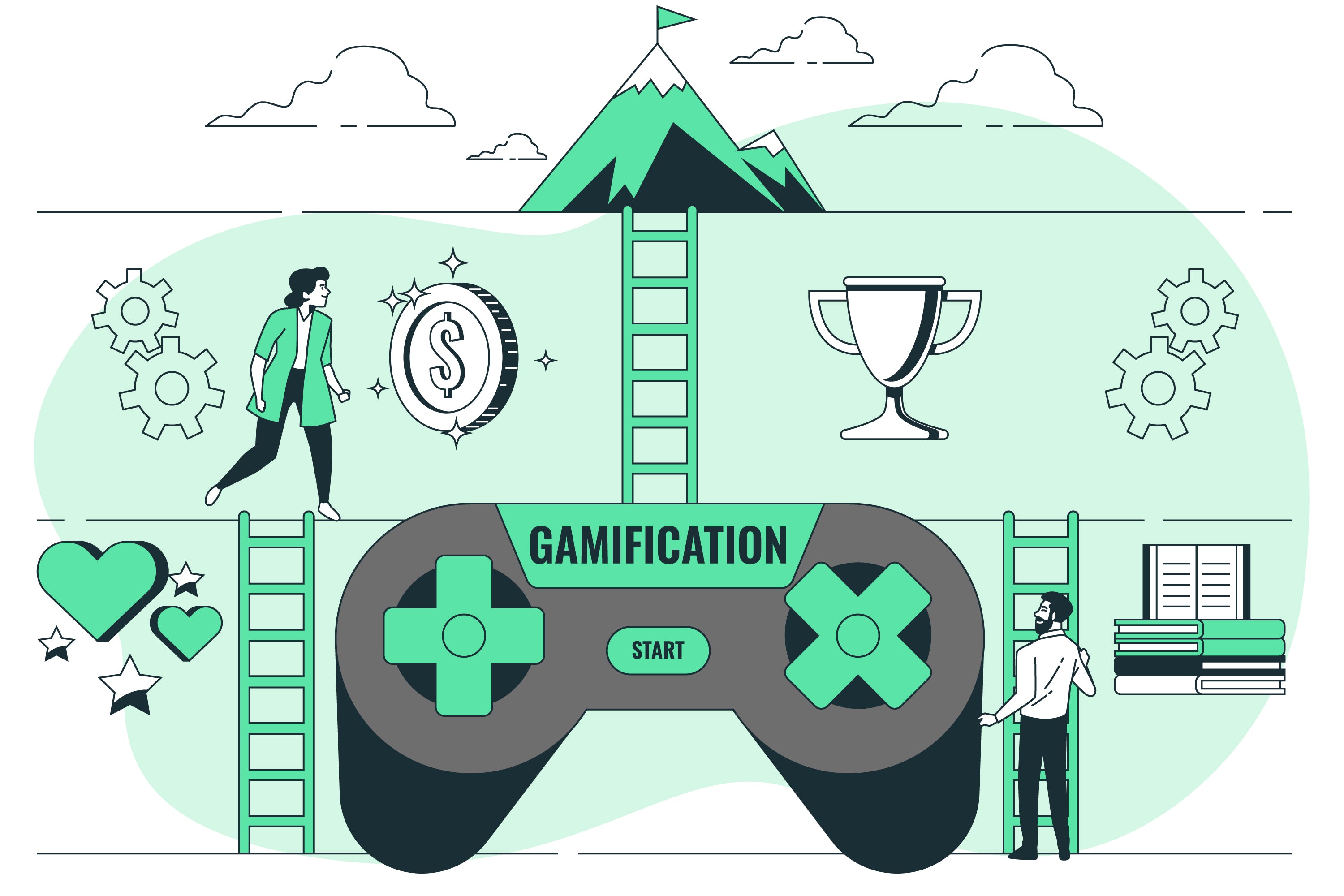Beginner's Guide to Game Development

Are you an aspiring game creator looking to embark on an exciting journey into the world of game development? The realism of game development is exhilarating and every day it is witnessing new advancements. If you are an avid game player and looking to tune your passion into something meaningful, game development is your answer. Whether you're driven by a passion for gaming or a desire to turn your creative ideas into interactive experiences, this beginner's guide will walk you through the essential steps of game development. From understanding what game development is to designing, and distributing your game, we've got you covered!
Understanding the Game Development Process
Game development is a dynamic and multidisciplinary process that involves creating video games from concept to completion. It encompasses a wide range of activities, from conceptualizing the game idea to designing its visuals, programming its mechanics, and finally distributing it to players. This process combines elements of art, design, programming, storytelling, and testing to create an immersive and enjoyable gaming experience.
Game development brings together the creative artistry of storytelling and visual design with the technical prowess of programming. It's like crafting a digital world where imagination meets interactivity. Developers work tirelessly to ensure that every pixel, every line of code, and every sound effect come together seamlessly to create an experience that captivates players. This intricate blend of creativity and technicality forms the backbone of the gaming industry, inviting players to step into virtual worlds and embark on unforgettable adventures.
How Much Time Does Game Development Take?
The time it takes to develop a game can vary widely based on several factors. Simple mobile games with basic mechanics and graphics might take a few months to create, while more complex and ambitious projects like high-quality console games can take several years. The size of the development team, the scope of the game, the level of detail in graphics and gameplay, as well as unexpected challenges that may arise during development, all contribute to the timeline. Smaller indie games may take around six months to a year, while larger, AAA titles can span three to five years or even longer. Game developers need to balance quality with time constraints, ensuring that the final product meets players' expectations.
Types of Games You Can Develop
In the world of game development, there's a fascinating array of different types of games to dive into. Imagine games that get your heart racing with excitement – these are action games. In action games, you'll be dodging obstacles, fighting enemies, and doing daring feats that make you feel like a hero. On the other hand, role-playing games, or RPGs, take you on incredible adventures where you become a character in a story. You'll make choices that affect how the story unfolds, like deciding where to go and what to say to other characters.
Ever thought about running your own city or becoming a pilot? Simulation games let you experience these things virtually. You can build and manage cities, farms, and theme parks, or even simulate real-life professions like being a doctor or a chef. If you're into thinking strategically and making plans, strategy games are your playground. These games challenge you to make smart decisions to conquer opponents or solve challenges.
Puzzle games are perfect for those who love brain teasers. They present you with clever puzzles that need solving, whether it's arranging blocks, matching colors, or solving mysteries. Each level brings a new challenge to keep your mind engaged.
All in all, the world of game development offers a variety of games, each offering a unique and exciting adventure for players to enjoy. So, as you decide on developing a game, you can choose any of these to begin with.

How to Develop a Game?
Game development can be really exhilarating for the true game enthusiast. Modern technology has made it easier to develop a game following a few steps.
1. Defining Your Game Concept
Every game begins with a concept – a unique idea that forms the basis of the entire game. This concept includes the game's genre (such as action, adventure, puzzle, or role-playing), its storyline, characters, and gameplay mechanics. Defining a solid concept is crucial, as it guides all the subsequent stages of development.
This idea is like the heart of the game. It decides if the game will be full of action, adventure, solving puzzles, or role-playing. This idea also makes up the story of the game, the people in it, and how everything will work. Having a clear and strong idea is super important because it helps everyone know what the game will be like as they work on it. It's like having a map that guides you to make the game of your dreams.
2. Learning the Basics of Programming
Coding is a fundamental aspect of game development. Learning programming languages is essential, as they enable you to create the logic and functionality of your game. While coding may seem overwhelming to some, it does not necessarily have to be so. Game development platforms offer user-friendly interfaces that make coding more accessible to beginners. They have features and options that make it easier to tell your game what to do, even if you're just starting out. So, coding is like the secret language that brings your game to life, and with the right tools, it's a language anyone can learn!
3. Creating Engaging Gameplay
Engaging gameplay is the heart of any successful game. It involves designing levels, challenges, and interactions that keep players entertained and invested in the game world. Decide how everything fits together and make sure there's a logical flow to the gameplay. Striking a balance between difficulty and enjoyment is key, and iteration based on playtesting and player feedback is crucial to refining the gameplay experience. It's like making a playground where players can explore, solve problems, and have adventures. Playtesting can help to gather feedback from players and improve upon them. Engaging gameplay is essential for game development in 2023, as it largely determines the success of the game.
4. Crafting Visual and Audio Elements
Visual and audio elements play a vital role in enhancing a game's atmosphere and immersion. Art assets, animations, and visual effects contribute to the game's aesthetics, while sound effects and music create an emotional connection with players. Interesting visuals can result in higher player retention as they create interest and increase the fun. Meanwhile, sound effects and music amplify the game's immersion – the rush of footsteps, the thrill of battle music, or the soothing melodies in calm moments. These elements work together to create a captivating and memorable gaming experience that is interactive and immersive at the same time.
5. User Interface and Experience (UI/UX) Design
User satisfaction is paramount when it comes to game development. A well-designed user interface (UI) and user experience (UX) contribute to smooth navigation and interaction within the game. Designing intuitive menus, controls, and HUD elements ensures that players can easily navigate the game without confusion. Prioritizing user experience leads to greater player satisfaction. As a beginner in game development, you should try to put the players first and make sure that it is easy to navigate for them. The use of 3D characters and 3D assets has recently gained popularity in the game development world as it enhances user experience. So, as a beginner, consider utilisations of the latest technologies like 3D assets in game development.
6. Testing and Debugging
Thorough testing is vital to identify and eliminate bugs, glitches, and other issues that might affect gameplay. Extensive playtesting helps ensure that the game is stable, functional, and free from major errors. Gathering feedback from testers allows for necessary improvements and enhancements. Fixing the issues and debugging based on their feedback ensures that when players get their hands on the game, it's smooth, fun, and frustration-free!
7. Optimization for Performance
Optimizing your game for performance is a must to make sure it works great on all kinds of devices and platforms. This process involves making the code, graphics, and other parts of the game work as efficiently as possible. By doing this, you reduce the time it takes for the game to start and make sure it doesn't slow down or get choppy while players are playing. This optimization work ensures that players can have a seamless and enjoyable gaming experience without any technical hiccups. After all, we all want to play without any interruptions and it should be taken care of in the game development process.
8. Monetization Strategies
If you intend to monetize your game, it's important to explore various strategies such as in-game purchases, ads, or a one-time purchase model. Finding the right monetization strategy for your game and target audience is crucial for balancing revenue generation with player satisfaction. When you plan to make money from your game, you need to think about different ways to do it. Some options include letting players buy things in the game, showing ads, or having players pay once to play. Picking the right way to make money depends on the game you made and obviously, on the audience. This is important because you want to make money but also make sure players enjoy the game without feeling pressured to spend money. So, choosing the right money-making way is like finding the perfect fit for your game and the people who love playing it.
9. Publishing and Distribution
After completing the development process, the next step is to publish and distribute your game. Once your game is all set, it's time to share it with the world. This step is about putting your game where players can find and enjoy it. You can put your game on distribution places, or have your own website for people to download it. Before you do that, make sure to tell people about your game through ads, trailers, and social media. Building a community around your game by talking to players and listening to their thoughts can also create a buzz and make players excited to finally play your game.
10. Adapting and Updating
Continuously evolving a game is about keeping it current and engaging. Over time, you might want to make improvements, add new content, or adjust features based on player feedback. This process ensures that your game stays interesting and relevant, offering players new experiences and challenges. By adapting and updating the game, you maintain its appeal and give players a reason to keep coming back for more enjoyment.

Conclusion
Embarking on the journey of game development is both challenging and incredibly rewarding. By understanding the essence of game development, from conceptualization to distribution, you've taken the first steps toward bringing your creative visions to life. Every game developer started with a passion for gaming and a desire to create something unique. With dedication, continuous learning, and a willingness to adapt, you can turn your dreams of game development into a successful reality. Happy creating!
-
Posted in
3d asset, game development




